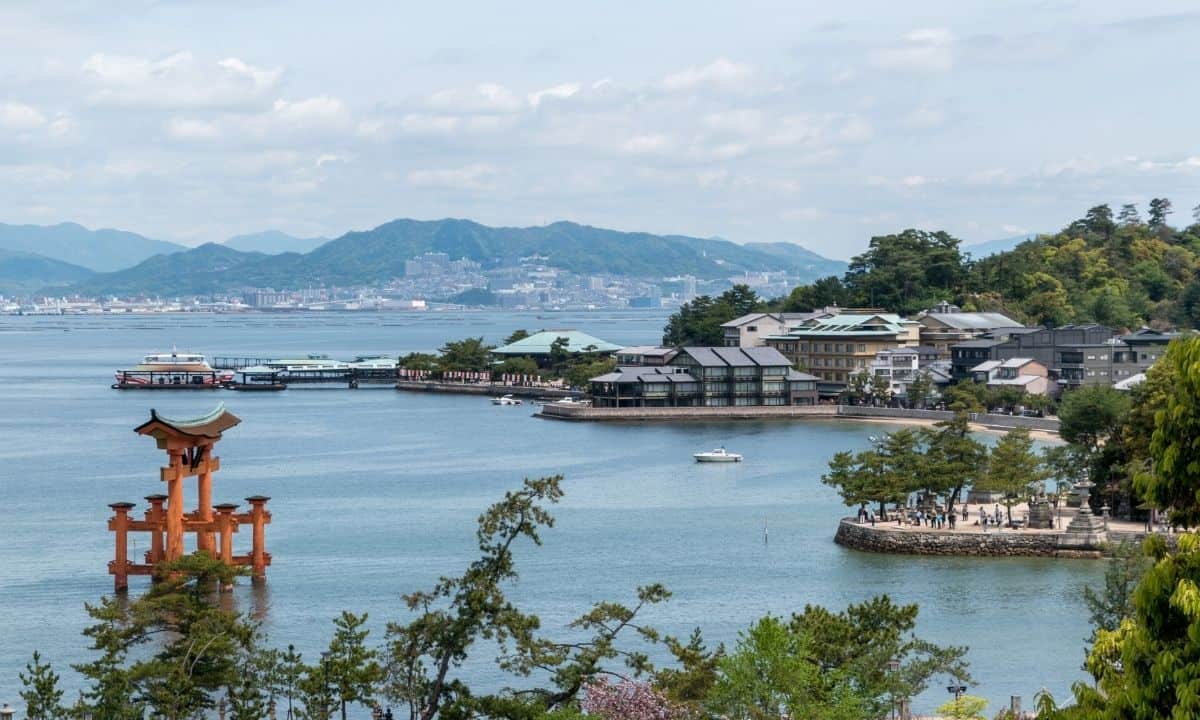
Hiroshima Bay, located in the western part of Japan’s largest island, Honshu, is a place of historical significance, natural beauty, and cultural richness. This bay, bordered by the Seto Inland Sea, has a captivating history that dates back centuries. From serving as a strategic naval base during World War II to being the site of the devastating atomic bombing in 1945, Hiroshima Bay has witnessed both the darkest and brightest moments of human history. Today, it stands as a symbol of resilience and peace, attracting visitors from around the world who come to explore its fascinating landmarks and immerse themselves in its serene surroundings. In this article, we will delve into 19 astounding facts about Hiroshima Bay, revealing its captivating allure and shedding light on its remarkable past.
Key Takeaways:
- Discover the beauty and history of Hiroshima Bay, from stunning sunsets to its role as a trading hub during the Edo period. It’s a captivating destination for nature lovers and history enthusiasts alike.
- Experience the tranquility and adventure of Hiroshima Bay, with its calm waters perfect for sailing and a wide range of water sports. Explore its rich history, enjoy delectable seafood, and witness breathtaking sunsets.
The Hiroshima Bay is located on the southern coast of Honshu Island, Japan.
Nestled between the Hiroshima and Yamaguchi prefectures, this picturesque bay is known for its natural beauty and historical significance.
The bay covers an area of approximately 500 square kilometers.
With its vast expanse of sparkling waters, Hiroshima Bay offers plenty of space for recreational activities such as boating, fishing, and swimming.
The bay is famous for its stunning sunsets.
As the sun dips below the horizon, the sky above Hiroshima Bay transforms into a breathtaking palette of vibrant colors, providing a picturesque backdrop for romantic evenings.
Hiroshima Bay served as a crucial trading hub during the Edo period.
Merchant ships from all over Japan would gather in the bay to exchange goods, making it a bustling center of commerce and cultural exchange.
The bay is home to numerous species of marine life.
From colorful coral reefs to schools of playful dolphins, Hiroshima Bay boasts a diverse ecosystem teeming with aquatic wonders.
The iconic Itsukushima Shrine is located in Hiroshima Bay.
Standing on a picturesque island, the shrine and its famous floating torii gate attract visitors from around the world, offering a serene and spiritual experience.
Hiroshima Bay was severely affected by the atomic bombing in 1945.
The devastating effects of the atomic bomb forever changed the landscape of the bay, leaving a lasting impact on the surrounding communities.
The Hiroshima Peace Memorial Park overlooks the bay.
A symbol of hope and remembrance, this park serves as a poignant reminder of the horrors of war and the importance of peace.
The bay is known for its delectable seafood.
With an abundance of fresh fish and oysters, Hiroshima Bay is a paradise for seafood enthusiasts, offering a wide variety of culinary delights.
The Miyajima Fireworks Festival takes place in Hiroshima Bay annually.
Visitors can witness a spectacular display of fireworks illuminating the night sky and reflecting off the tranquil waters of the bay.
Hiroshima Bay offers breathtaking views of the Seto Inland Sea.
The bay serves as a gateway to the Seto Inland Sea, a beautiful expanse of water dotted with countless islands and famous for its picturesque landscapes.
The bay is surrounded by scenic mountains.
Lush green mountains provide a stunning backdrop to the tranquil waters of Hiroshima Bay, creating a picturesque setting for nature lovers.
The bay has historical significance due to its proximity to Hiroshima City.
Hiroshima City, located on the bay’s shores, is known worldwide for the tragic events of August 6, 1945, and serves as a symbol of resilience and peace.
The bay is a popular destination for cruise ship excursions.
Travelers can embark on a luxurious cruise through the bay, enjoying the scenic beauty and exploring the surrounding attractions.
Hiroshima Bay is a designated national park.
The bay’s natural beauty and ecological importance have earned it the prestigious status of being a protected national park in Japan.
The bay is an ideal spot for water sports enthusiasts.
From kayaking and paddleboarding to jet skiing and windsurfing, Hiroshima Bay offers a range of thrilling activities for adventure seekers.
The bay’s calm waters make it a perfect spot for leisurely sailing.
Sailing enthusiasts can enjoy a peaceful experience as they glide across the gentle waves of Hiroshima Bay, taking in the breathtaking scenery.
The bay is surrounded by beautiful sandy beaches.
Visitors can soak up the sun and enjoy a day of relaxation on the pristine beaches that line the shores of Hiroshima Bay.
The bay’s rich history and natural beauty make it a popular tourist destination.
Whether it’s exploring historical sites, immersing oneself in nature, or simply enjoying the tranquility of the bay, Hiroshima Bay offers a captivating experience for travelers from all over the world.
So, there you have it – 19 astounding facts about Hiroshima Bay. From its historical significance to its breathtaking beauty, this bay has something to offer everyone. Whether you’re seeking adventure, relaxation, or a glimpse into Japan’s rich cultural heritage, a visit to Hiroshima Bay is sure to leave you in awe.
Conclusion
In conclusion, Hiroshima Bay is a fascinating and historically significant body of water. From its role in the devastation of the atomic bomb to its vibrant marine biodiversity, there is much to discover and appreciate about this bay. The 19 astounding facts we have explored highlight the rich history, natural beauty, and cultural significance of Hiroshima Bay.Whether you are interested in exploring the underwater world, learning about the resilience of nature after tragedy, or delving into the profound impact of historical events, Hiroshima Bay offers a unique and thought-provoking experience. It serves as a reminder of the indomitable spirit of humanity and the importance of preserving our natural resources.So, if you ever find yourself in Hiroshima, make sure to take the time to visit this extraordinary bay. Reflect on its past, appreciate its present, and embrace its future – a testament to the resilience and strength of the human spirit.
FAQs
Q: How deep is Hiroshima Bay?
A: Hiroshima Bay has an average depth of about 20 meters (66 feet), making it a relatively shallow bay.
Q: Is Hiroshima Bay safe for swimming?
A: Yes, Hiroshima Bay is generally safe for swimming. It has designated swimming areas with lifeguards on duty during the summer months.
Q: Are there any islands in Hiroshima Bay?
A: Yes, Hiroshima Bay is home to several islands, including Miyajima Island, which is famous for its iconic floating torii gate.
Q: Can you see marine life in Hiroshima Bay?
A: Absolutely! Hiroshima Bay boasts a diverse marine ecosystem with various species of fish, shellfish, and even dolphins.
Q: Are there any recreational activities available in Hiroshima Bay?
A: Yes, visitors can enjoy a range of activities in Hiroshima Bay, including sailing, kayaking, fishing, and even cruising around the bay.
Q: Is there any historical significance associated with Hiroshima Bay?
A: Yes, Hiroshima Bay is famously known as the site where the atomic bomb was dropped during World War II, marking a significant event in human history.
Hiroshima Bay's captivating beauty and rich history make it a must-visit destination. From stunning sunsets to delectable seafood, this national park offers something for everyone. If you're interested in learning more about the surrounding area, explore the fascinating facts about Fukuyama, a city in Hiroshima Prefecture. For those curious about the bay's historical significance, discover the impact of the atomic bombing on Hiroshima and its aftermath.
Was this page helpful?
Our commitment to delivering trustworthy and engaging content is at the heart of what we do. Each fact on our site is contributed by real users like you, bringing a wealth of diverse insights and information. To ensure the highest standards of accuracy and reliability, our dedicated editors meticulously review each submission. This process guarantees that the facts we share are not only fascinating but also credible. Trust in our commitment to quality and authenticity as you explore and learn with us.


